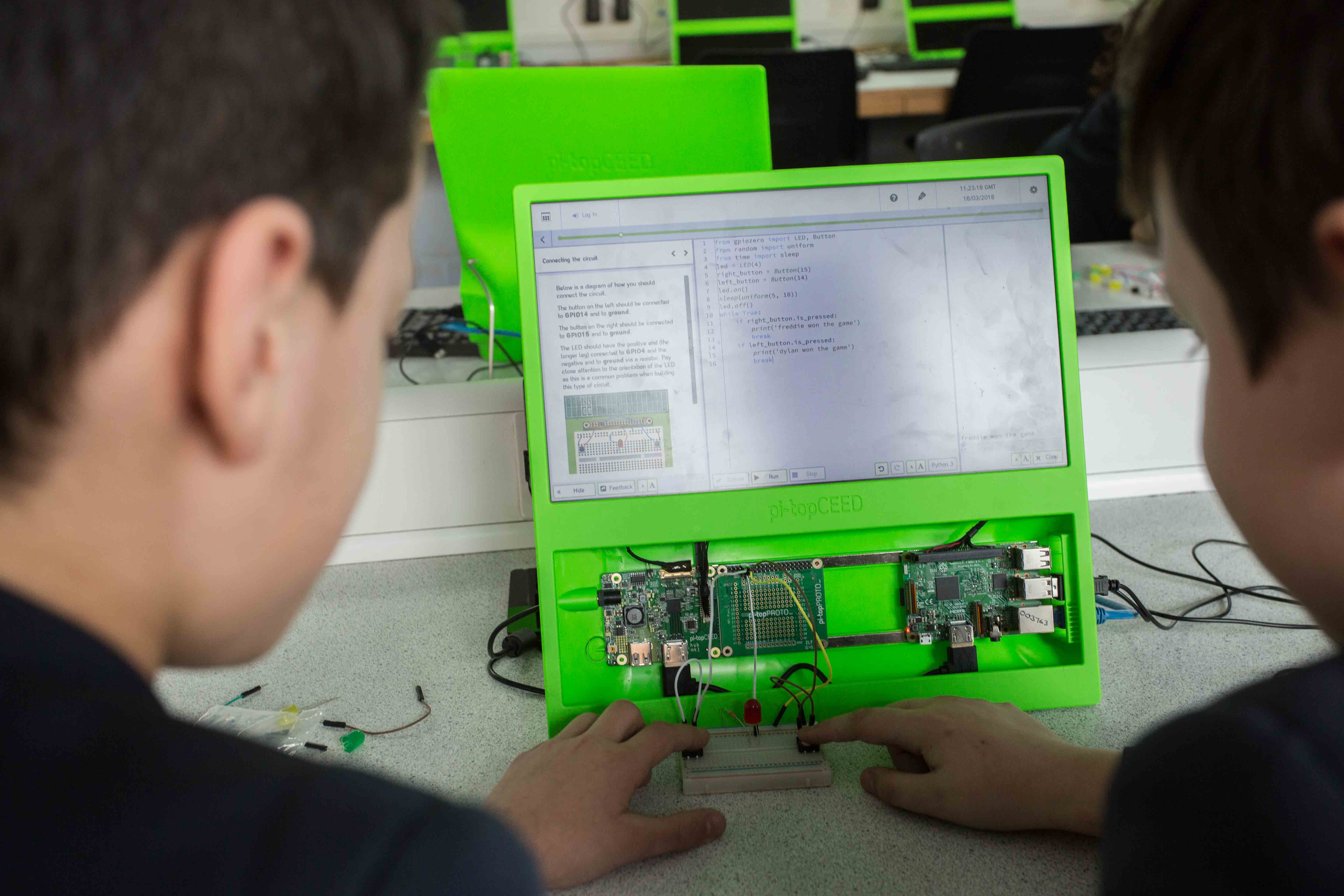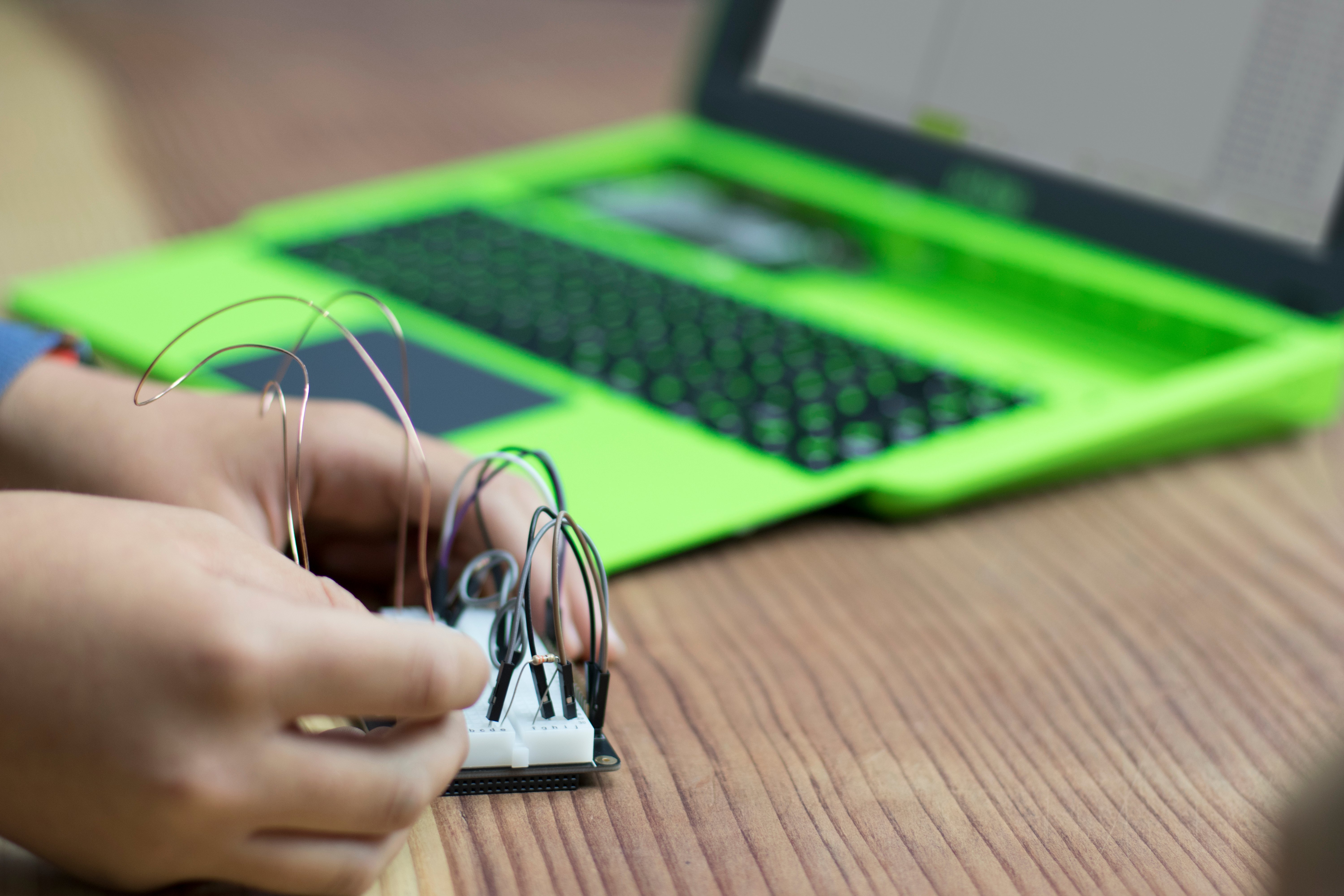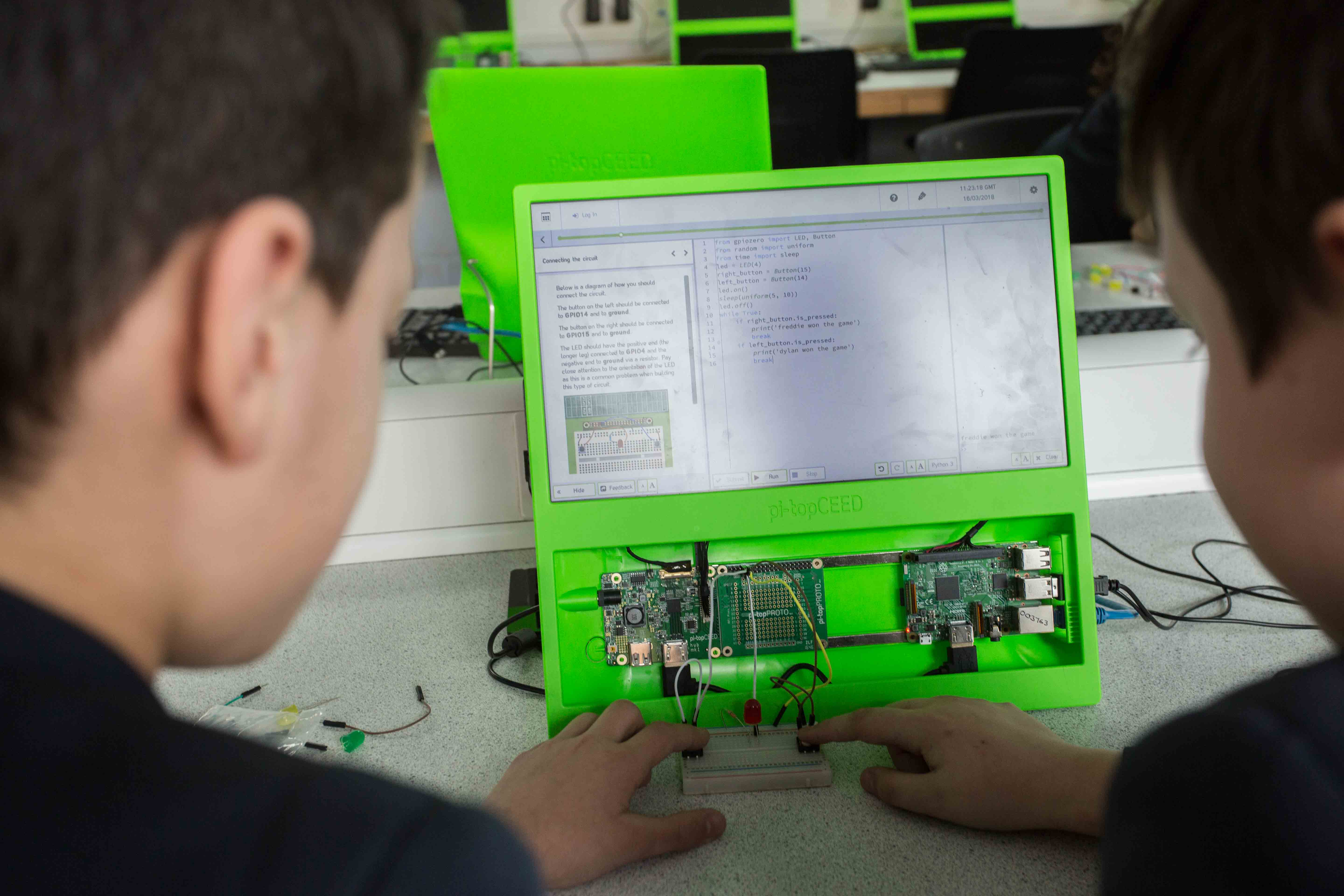What were your school days like? If they were anything like mine, you spent quite a bit of time hoping not to be picked on in physics, struggling with algebra, and staring out of the window while your chemistry teacher read at you from a textbook. I did enjoy design technology though, because it gave me the chance to do something.
Most of us have been through an education system which taught us how to pass exams, learn facts by heart and do mental arithmetic, while sitting in rows of desks facing a teacher and a blackboard (or whiteboard, if you’re younger than me).
And this system worked while standardized, industrialized education was the objective. But as our world has grown in complexity — so much so that even our factories have had to change — we need to rethink our educational approach as well. At pi-top, we know that there’s a better way of teaching and learning for today’s students, especially in STEAM subjects.
Learning by Making in STEAM Subjects

Before we industrialized education, there was a different way of learning, and that involved making, doing or building something.
In this method, instead of being told how to solve a problem in theory and then completing some practice examples, students figure out how to solve problems for themselves, often as a group. In actually experiencing that process by getting hands-on, they directly observe and understand what is happening. There’s also achievement in discovery, a sense of “yes! I did that!” and ownership of their learning.
With the rise of edtech resources such as pi-top, rather than listening to a science lecture, students can now set up their own sensors to measure air quality, test groundwater, or even create a tsunami warning system. What was an uninspiring lesson in a non-making classroom can now be an exciting, real-life, tangible project for today’s students.
Learning by making is most effective when it’s relevant to real life, because it’s easier for students to understand and relate to what they’re doing.
Why does learning by making work?
Students learn skills they need for the future
Taking STEAM beyond the text-book means putting collaborative problem-solving and critical-thinking skills to the test. An added benefit is that this type of learning encourages students to discover and do things for themselves and learn both independently and with their peers.
It engages different types of learners
Hands-on, ‘maker’ learning supports different types of learners because it gives everyone a place. Those with more experience can help those with less, those who want more simple or more complex applications or scenarios can build a project that suits them, and all of them can take advantage of different kinds of memory — procedural, autobiographical, communicative — that neuroscience has shown to be more powerful than the semantic memory necessary for filling out a worksheet or taking a multiple-choice test. Visual learners see something in action, kinesthetic learners get to do something, and auditory learners talk about what they’re doing.
Students get meaningful feedback
Trial and error, figuring out a new way of doing something, input from peers, testing, prototyping and improving (in addition to teacher feedback) can all happen within a lesson. Students learn more quickly, and crucially they will make mistakes or their tests won’t work first time, so they also learn more deeply.
It helps students remember
Learning by making helps students retain knowledge because of this depth of learning and engagement, and because they’re using their hands as well as their minds. There’s no point in forcing students to memorize a bunch of content if they can’t apply what they have been taught, or use it outside of the context of the classroom where they are learning.
It’s empowering and character-building
According to research from the Harvard Graduate School of Education, students not only improve STEM skills through making, but they also take a sense of inspiration away and feel empowered to engage with their environment.
And finally…it’s fun!
Learning by making engages students; there’s a buzz of creativity and joy in this type of learning. Nothing could be better than having a classroom full of engaged students who are learning to apply their knowledge in a meaningful way.
The future of STEAM lessons is learning by making
It’s been more than 11 years since Sir Ken Robinson gave his famous TED Talk, Do Schools Kill Creativity?, and not much has changed since – but it can.
As Dr. LaRue Moore from Kennedy High School in Richmond, California, put it to us, “Let them try the technology and see what they can do with it, because they need to feel like they can succeed in today’s world.” We need to empower students to be creative, try things out and make mistakes on the way to success.
Surely the true purpose of education is to teach children and young adults how to take on life’s challenges, collaborate, problem-solve, think critically, be creative and to learn how to learn (something exam bodies and text-book publishers know, even if their products don’t reflect it). That’s what learning by making is about, and that’s our mission at pi-top.
If you’d like to find out more about how 'learning by making’ with pi-top can help you, your students and your school, get in touch here.
